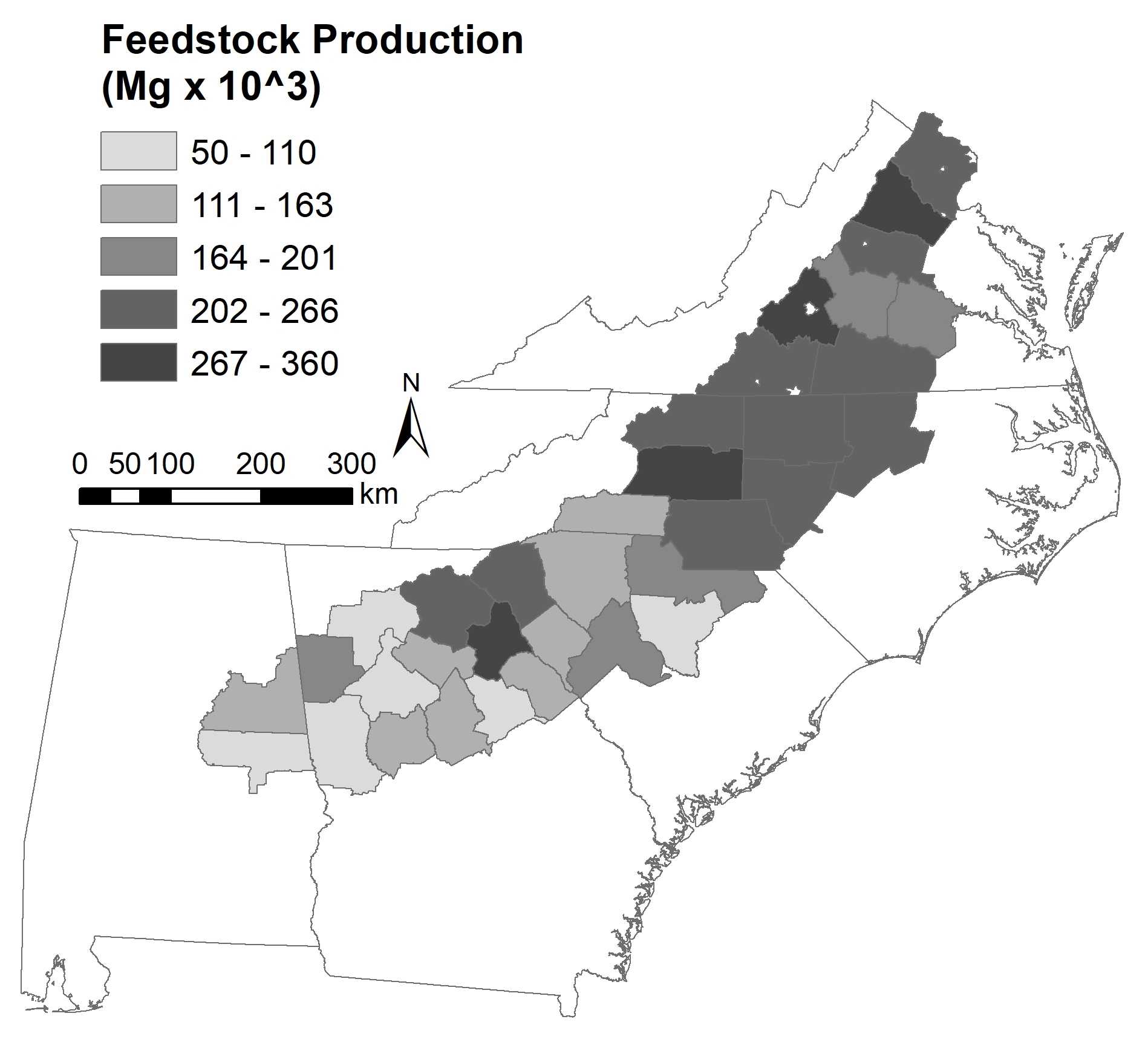Senior Lecturer Dr. Jonathan Resop (https://geog.umd.edu/facultyprofile/resop/jonathan), lecturer in the MS GIS program (https://geospatial.umd.edu/education/master-science-geospatial-information-sciences), along with Professor Emeritus Dr. John Cundiff from Virginia Tech (https://www.bse.vt.edu/about/people/faculty/john-cundiff.html), has published an article in the journal Biofuels, Bioproducts, and Biorefining entitled "Assessment of Herbaceous Feedstock Supply for Locating Biorefineries in the Piedmont, USA." This study is the first step in exploring the potential for establishing a renewable bioenergy industry in the southeast region of the United States based on a herbaceous feedstock.
The full abstract of the paper is presented below:
The push for renewable energy sources has local government agencies striving to optimize their limited resources. Various energy sources are often explored depending on the region – for example, wind, solar, geothermal, and bioenergy. The Piedmont region of the USA has the potential to be a significant player in the production of biomass to supply a biorefinery. However, before local agencies and private biorefineries can invest in such an endeavor, the potential feedstock supply must be quantified. The goal of this study was to perform a land-use assessment for the 166 counties spanning five states (Virginia, North Carolina, South Carolina, Georgia, and Alabama) that make up the bulk of the Piedmont region. For each county, the potential for producing and supplying herbaceous feedstock (i.e., switchgrass) was quantified based on 2017 land use. Only 48% of the counties had the potential to supply a biorefinery larger than 0.5 round bales per min (bpm) (97 000 Mg year–1). To supply a more reasonably sized biorefinery, the Piedmont counties were organized into 34 multi-county zones. For these zones, the potential switchgrass production to supply a biorefinery ranged from 50 000 Mg year–1 to 360 000 Mg year–1. The total feedstock production for the region was 6 470 000 Mg year–1, equal to a potential production of about 3.3% of the current US consumption of ethanol for blending with gasoline. The development of a bioenergy industry in the Piedmont will require local leadership and initiative; however, this study provides the first step in envisioning the potential of such an industry.
The full paper can be accessed here:
https://onlinelibrary.wiley.com/doi/full/10.1002/bbb.2297
https://onlinelibrary.wiley.com/share/author/BAF2M662TMT9QSDRJRIR?target=10.1002/bbb.2297
Resop, J. P. and J. S. Cundiff. September 2021. "Assessment of Herbaceous Feedstock Supply for Locating Biorefineries in the Piedmont, USA." Biofuels, Bioproducts, and Biorefining.


